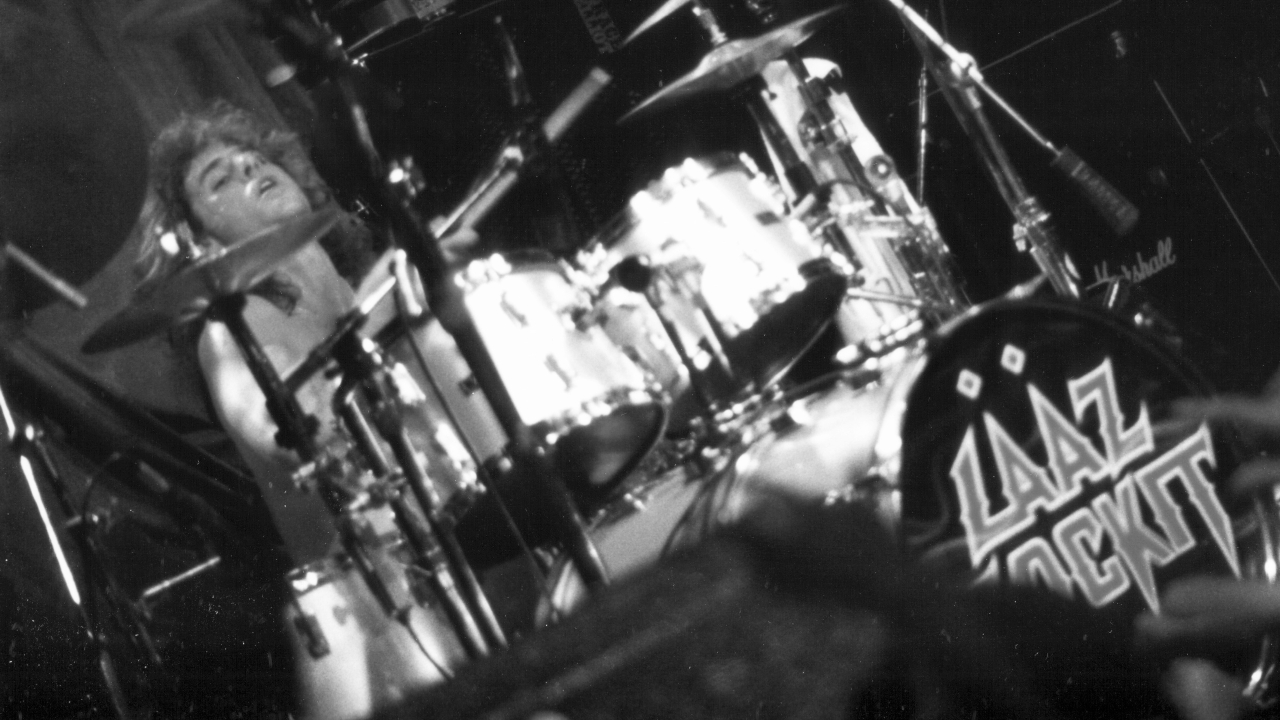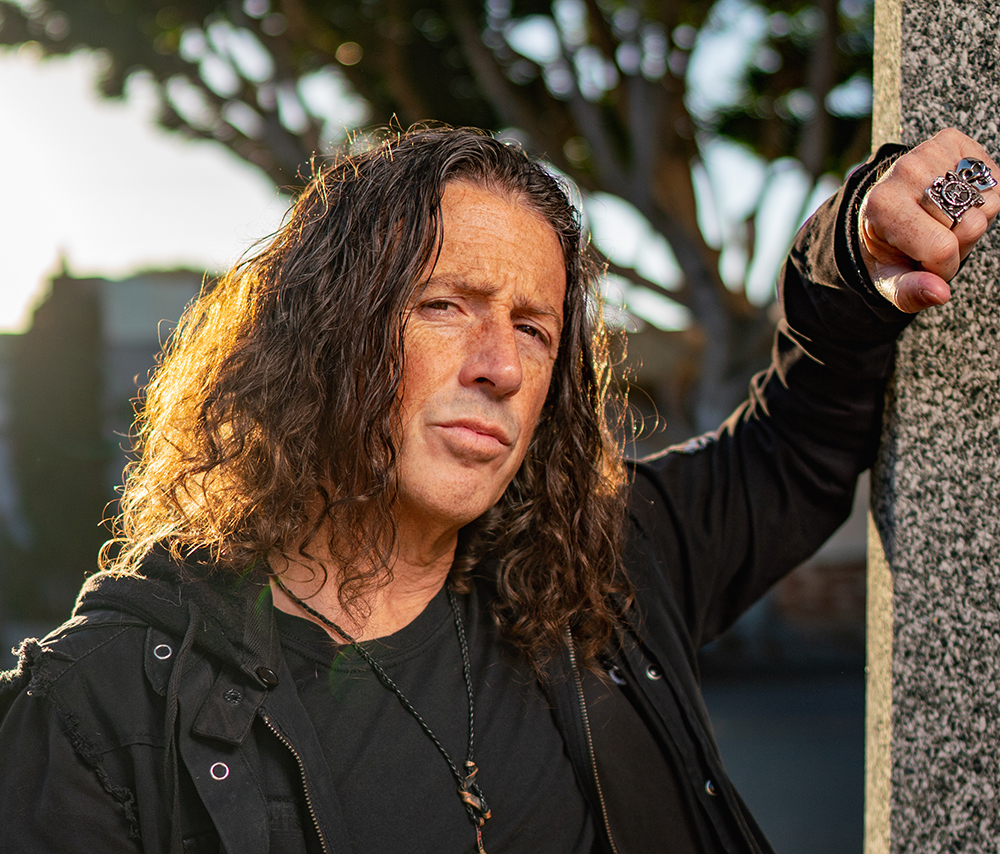“Lääz Rockit were headliners, and the band in the middle was Metallica.” The story of Lääz Rockit: the unsung thrash heroes who changed the future of metal’s biggest band
With a pioneering sound, packed-out San Francisco shows and a kinship with Metallica, Lääz Rockit could have been the fifth part of the Big Four. So why did they call it quits as early as 1992?

In the annals of thrash metal (a genre known for its blistering tempos and scrappy, beer-sodden origins), the story of Lääz Rockit occupies a curious and important chapter.
Emerging from the San Francisco Bay Area in the early 1980s, Lääz Rockit carved out a niche that both contributed to the thrash movement and set them apart from their contemporaries. As part of that scene’s incendiary second wave alongside Testament, Death Angel, Vio-Lence and more, Lääz Rockit quickly ascended the ranks and yet, despite their pioneering contributions and prominent stature, today they remain underappreciated in the broader metal narrative.
The band, formerly known as Depth Charge, began gathering members in Berkeley, California, in 1981. By 1983, their lineup included Michael Coons (vocals), Aaron Jellum (guitar), Phil Kettner (guitar), Willy Lange (bass) and Victor Agnello (drums). Their new name, a playful phonetic spelling of “Laser Rocket”, was inspired by a scene from Clint Eastwood’s The Enforcer, hinting at both their sense of humour and their explosive musical style. Unlike the burgeoning Los Angeles glam metal scene, the Bay Area was conjuring something faster, darker and more aggressive. Thrash, with its roots in British heavy metal and hardcore punk, found fertile ground in cities like San Francisco and Berkeley, and Lääz Rockit were primed to take this new flag into battle.
The band’s 1984 debut, City's Gonna Burn, announced their arrival with a sound that was not purely thrash. It nodded at traditional heavy metal elements as well, which instantly distinguished them from so many of their contemporaries, who favoured pure, neck-whipping velocity over strong melodies, catchy choruses and polished production. “We were starting to learn a bit more about song structure,” recalled Coons in a 2009 interview. “Mind you, we were still very young then, and were still figuring out our musical style.” This blend of accessibility and intensity helped the upstarts gain a following, both locally and internationally.
Lääz Rockit’s subsequent albums, including No Stranger To Danger (1985) and Know Your Enemy (1987), further refined their sound. They toured extensively, both in the United States and Europe, amassing a rabid fan-base inspired by their cartwheeling, testosterone-powered live performances. Successes piled up. They shared stages with some of the biggest bands in the world and 1989’s Annihilation Principle remains one of the best thrash albums of all time.
Famously, it was at a 1982 Lääz Rockit gig when young Exodus guitarist Kirk Hammett met his future bandmates in Metallica for the first time. It was at the Metal Monday showcase at the Old Waldorf in San Francisco, where Exodus played first, followed by Metallica and finally, the mighty headliners, Lääz Rockit. Looking back on the evening, Hammett recalled, “We got booked on that show because we were friends with the headlining band, which was a band called Lääz Rockit, and the band in the middle was Metallica. And we were, like, ‘Oh, this is cool. We’re gonna be playing with Metallica!’”
Just one year later, the three bands played again, but Metallica were now headlining. It was an augury of the two bands’ fates. Despite their tireless touring and ambitious releases, Lääz Rockit faced challenges in breaking through to mainstream success. The thrash metal scene quickly grew overcrowded, with only a handful of acts like Metallica, Megadeth, Anthrax and Slayer dominating the conversation, and Lääz Rockit failed to keep pace.
Sign up below to get the latest from Metal Hammer, plus exclusive special offers, direct to your inbox!
This relegation is almost certainly down to a number of factors. Critically, the band hit their creative peak at the worst possible time: by the late 1980s and early 1990s, the musical landscape was shifting. The emergence of grunge and alternative rock, along with the commercialization of heavy metal, changed the industry's dynamics. Lääz Rockit, like many of their thrash contemporaries, found themselves out of step with the prevailing trends.
Their final studio album, Nothing’s Sacred (1991), showcased a band trying to evolve but ultimately caught between their roots and the changing tastes of the metal audience. Lääz Rockit broke up in 1992, but reformed in 2005 to find a joyous reception among the global metal community. The diehards held them in fond, if nostalgic, regard, while a new generation of metalheads were blown away by the discovery of one of the genre’s lost treasures.
In 2011, to celebrate their 30th anniversary as a band, Metallica hosted a four-night concert event in San Francisco, with each night featuring a different surprise opener. On the third evening, fans lost their collective shit when the openers turned out to be none other than Lääz Rockit. The reception was more than an honorific between friends; it was a blazing testament to the stature of one of thrash metal’s most beloved, influential and overlooked voices.
Today, they remain inactive, but should they ever resurface, Lääz Rockit will surely find a rousing reception awaiting them.
Hailing from San Diego, California, Joe Daly is an award-winning music journalist with over thirty years experience. Since 2010, Joe has been a regular contributor for Metal Hammer, penning cover features, news stories, album reviews and other content. Joe also writes for Classic Rock, Bass Player, Men’s Health and Outburn magazines. He has served as Music Editor for several online outlets and he has been a contributor for SPIN, the BBC and a frequent guest on several podcasts. When he’s not serenading his neighbours with black metal, Joe enjoys playing hockey, beating on his bass and fawning over his dogs.

